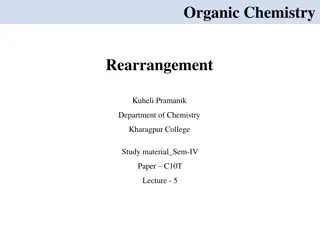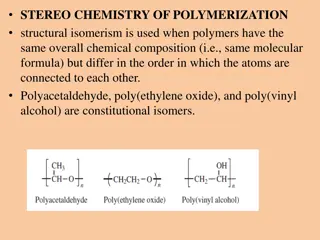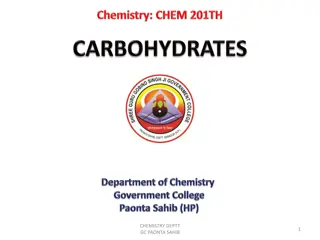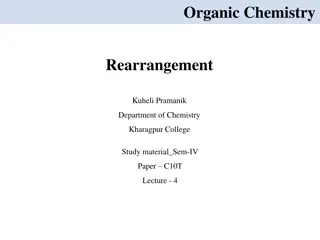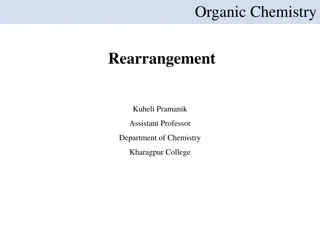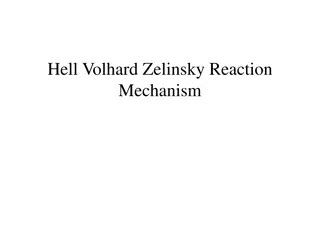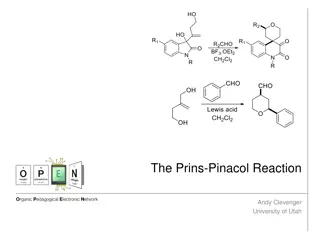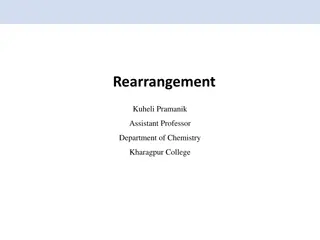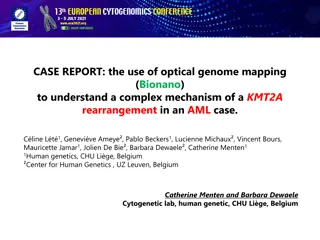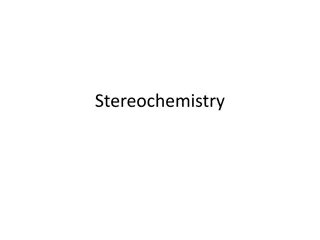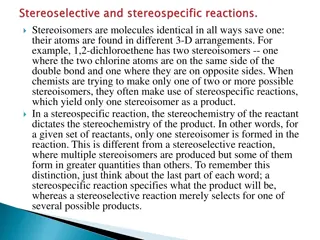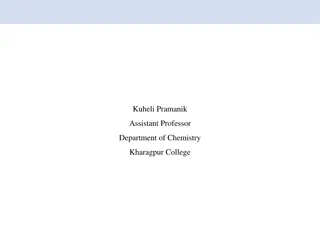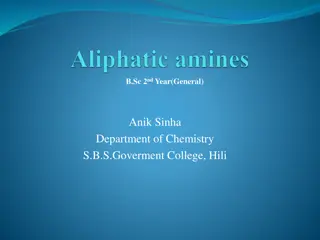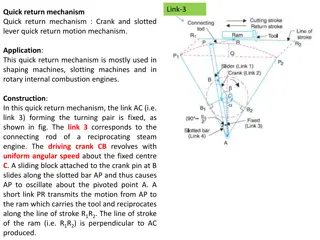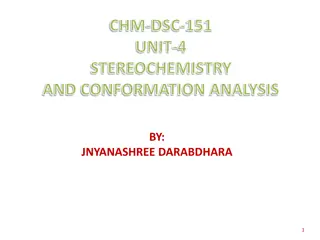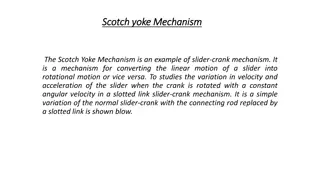Hofmann Rearrangement: Mechanism, Stereochemistry, and Key Steps
The Hofmann rearrangement is a notable organic chemistry reaction that converts an amide into an amine with one less carbon atom. This process involves key steps such as bromination of nitrogen, extraction of H+ by OH-, and rearrangement of anion. The mechanism includes the formation of N-Bromoamide and subsequent 1,2-shift of a group to an electron-deficient nitrogen. Stereochemically, if the migrating group is chiral, its configuration is retained in the product amine due to the rearrangement's intramolecular nature.
Download Presentation

Please find below an Image/Link to download the presentation.
The content on the website is provided AS IS for your information and personal use only. It may not be sold, licensed, or shared on other websites without obtaining consent from the author.If you encounter any issues during the download, it is possible that the publisher has removed the file from their server.
You are allowed to download the files provided on this website for personal or commercial use, subject to the condition that they are used lawfully. All files are the property of their respective owners.
The content on the website is provided AS IS for your information and personal use only. It may not be sold, licensed, or shared on other websites without obtaining consent from the author.
E N D
Presentation Transcript
ORGANIC CHEMISTRY REARRANGEMENT Kuheli Pramanik Asst. Professor Department of Chemistry Kharagpur College
Rearrangement reactions Rearrangement reactions Migration to Electron deficient system Electron rich system Wittig To nitrogen center To oxygen center To carbon center Meerwin-Wagner Favorski Hofmann Bayer-Villager Cumene- hydroperoxide-phenol Dakin Curtius Pinacol-Pinacolone Benzil-Benzilic acid Lossen Wolf Schmidt Demjanov Beckmann Tiffeneau-Demjanov
Aromatic Rearrangement Aromatic Rearrangement Intramolecular Intermolecular N C O C N C O C Hofmann-Martius Benzidine- Semidine Claisen Fries Fisher-Hepp N azo, C azo Bamberger Orton
Hoffmann Rearrangement The rearrangement which converts an AMIDE to an AMINE with one carbon atom less by the action of alkaline hypohalite or bromine in alkali is known as Hofmann rearrangement or reaction. Amides which do not have a substitution on the NITROGEN display molecular rearrangement to primary amines. In this rearrangement, the carbonyl carbon atom of the amide is lost and the R group of amide gets attached to the nitrogen of the amine.
Key Steps The reaction is as follows : KEY STEPS : The reaction is believed to proceed through following steps- Step 1: Bromination of nitrogen. Step 2: Extraction of H+ by OH- & rearrangement of anion. Step 3: Hydrolysis.
Mechanism Amide N-Bromoamide Bromoamide anion (Unstable) N-Bromoamide Acyl nitrene (Electron deficient) The Hofmann rearrangement Isocyanate involves a 1,2-shift of group with its electron pair to an electron- deficient NITROGEN Amine
Stereochemistry An interesting stereochemical observation is that if the migrating group (R) is chiral , its configuration is retained in the product amine. Thus this rearrangement is INTRAMOLECULAR, the migrating group does not become free, but remains attached with the substrate in some way e.g. via bridged transition state.
That the rearrangement is intramolecular has been supported by following evidences: 1. When the HR is carried out with mixture of m-deuteriobenzamide & p-substituted benzamide, only m-deuterioaniline & p-substituted aniline are formed. This shows that the rearrangement is intramolecular. Intramolecular Intermolecular x No cross-products formed
2. When optically active R-phenylpropionamide undergoes HR, then R- phenylethylamine having the same configuration is formed.
Rate of Hofmann Rearrangement In Hofmann rearrangement, N-Bromamide rearranges to isocyanate is one step with a loss of bromide ion. This is a slow step. Further, in arylamides,i.e., when the migrating group is aryl, then the rate of Hofmann reaction gets increased by presence of electron-releasing substituents in the aromatic ring. For e. g., in the case of substituted benzamide as :-- The reactivity of G is of the following order -OCH3 > -CH3 > -H > -Cl > -NO2
Applications 1. Synthesis of 1o aliphatic & aromatic amines 2. Preparation of aldehyde 3. In the preparation of anthranilic acid from phthalamide 1. Synthesis of 1o aliphatic & aromatic amines The HR is useful for conversion of carboxylic acids & their derivatives into 1o amines having one carbon atom less than the starting material. Benzoic acid 4-Bromoaniline
Applications 1. Synthesis of 1o aliphatic & aromatic amines
Applications ii) Preparation of -aminopyridine : It is prepared from the nicotinamide, because it cannot be produced in good yield via the nitration of pyridine. iii) Preparation of amino acids : -Alanine is prepared (45% yield) by treating succinimide with bromine & aq. caustic potash, reaction takes place through the haloamide of succinic acid.
Applications iv) Synthesis of anthranilic acid : Anthranilic acid is basic starting material for preparation of ortho-disubstituted benzene derivatives. anthranilic acid 2. Preparation of aldehyde: Hofmann reaction is used to convert , -unsaturated acids & -hydroxy acid amides into aldehyde.




